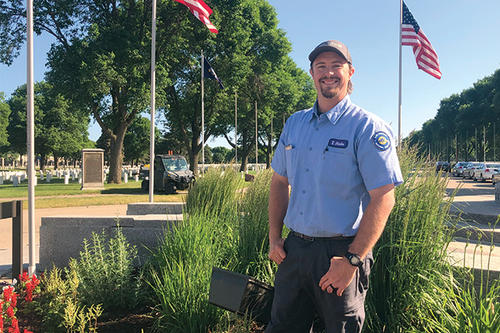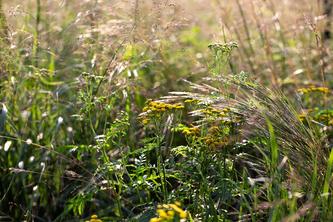
Burlin Mattson joined the National Guard as a hospital corpsman during the Korean War at age 16, requiring his mother’s signature because he was so young. When his daughter, Julie Mattson Ostrow, visits him at Fort Snelling National Cemetery, she feels like part of a family “made up of the veterans buried there, the volunteer riflemen who perform the salutes, other visitors paying respects and those who work to keep the vast cemetery so beautiful.”
The national cemetery is indeed vast and beautiful, yet more than the landscaping, most visitors are thinking about their loved ones. And University of Minnesota Extension is helping Fort Snelling’s gardeners make sure of that.
“We want the focus to be on the 235,000 people buried here and their families,” says Trevor Blake, assistant gardener. “But if we don’t think through how we maintain the turf, trees, and other plants, that’s when they are going to start noticing it—and not in a good way.”
Blake’s education is in forestry, but he enrolled in Extension’s Master Gardener course to learn current research on how to care for the diverse landscape.
“While most people who take the course become Master Gardener volunteers, there are many ways to serve communities, so the same learning opportunity is available for those like Trevor who garden as professionals,” says Tim Kenny, Extension horticulture education director.
The work of Blake and the Fort Snelling landscaping staff and volunteers is appreciated. “I am so honored my father is there, and my mother will eventually be buried there, too,” says Ostrow. “It’s a breathtaking place and we are so fortunate to have it here.”
- Categories:
- Agriculture and Environment





